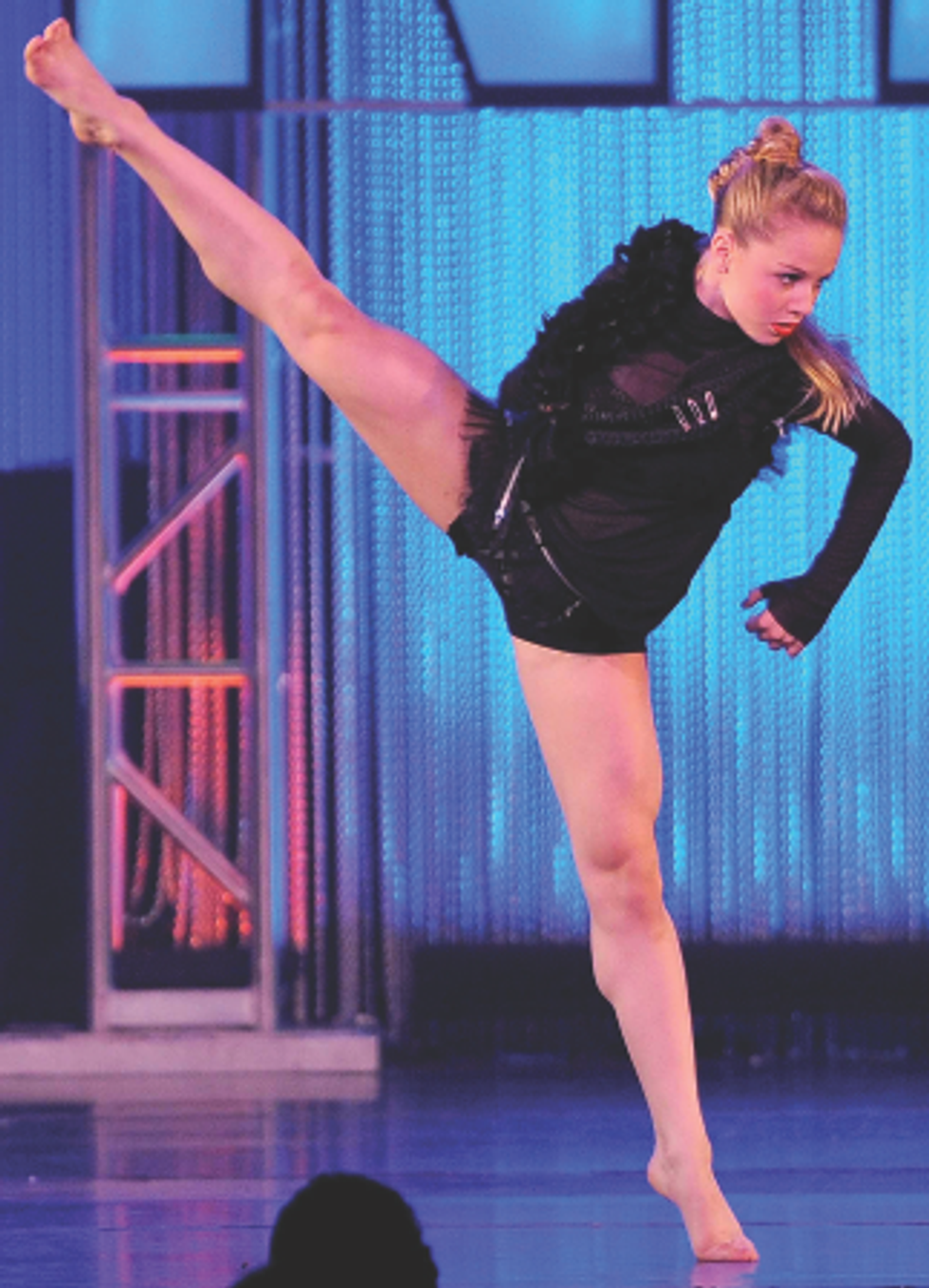Going for the Gold

Alexia Meyer performing her title-winning solo at New York City Dance Alliance Nationals in 2012 (photos courtesy NYCDA)
For years, Alexia Meyer struggled with comparing herself to other dancers. “I would feel confident going into a competition, but as soon as I saw other dancers’ abilities, I would second-guess what I was capable of,” says Alexia, who just graduated high school. “My self-consciousness definitely hurt my performance. When I wasn’t confident, I couldn’t dance 100 percent.” Alexia consistently placed among the top dancers at competitions, but never won at Nationals.
Then her studio, The Dance Club in Orem, UT, brought in performance psychology consultant Justin Su’a, who counsels elite athletes (including a few Olympians) and artists such as “Dancing with the Stars” pro Chelsie Hightower on improving mental skills for physical performance. Su’a led three group sessions at TDC. “He talked a lot about managing stress and fear, and getting rid of self-doubt,” says TDC co-owner Allison Thornton. “All of our dancers were excited to try the techniques he offered, but Alexia really took his advice to heart.” After the team sessions, Alexia kept meeting with Su’a one-on-one—and his advice worked. At 2012 Nationals, Alexia overcame her confidence issues and was named New York City Dance Alliance’s Senior Female Outstanding Dancer.
How could a sports psychologist’s methods improve your own performance? Here are five strategies you can take from the field, the pool and the rink to the studio and the stage.
Stop Negative Self-Talk
“Anytime you’re being judged on your performance, it’s easy to beat yourself up,” Su’a says. The first steps in silencing the inner voice telling you you’ll never be good enough are recognizing the thought and realizing you don’t have to listen. “People think, If I have this thought, it must be true,” he explains. “Believing that negative inner voice can lead to a physiological response that affects your performance.”

Alexia getting her start at NYCDA
Turn the tables by thinking about what you want to be saying to yourself before a performance or competition. For example, Su’a helped Alexia come up with “power statements” to repeat when she starts doubting herself or questioning her capabilities. “I say things like, ‘I’m here to dance, and that’s all I care about,’ ” Alexia says.
Use Imagery
Have you ever heard an athlete use the phrase “Be the ball”? Just as a soccer player might visualize the ball sailing past the goalie and into the net, dancers can visualize what they hope to do onstage. Picturing what you want to happen—rather than what you don’t, like falling or messing up—can help you relax and let your training take over.
Dr. Kate Hays, a performance psychologist who works with athletes and dancers, uses both realistic and metaphorical imagery with her clients. “For Swan Lake,” she explains, “realistic imagery would focus on the music and envisioning particular steps. Metaphorical imagery would be thinking about ‘swan-ness’—being a swan rather than being a dancer.” Try both types of imagery to see what resonates with you.
Breathe Through the Nerves
“Nerves aren’t bad—they’re your body’s way of telling you it’s show time,” Su’a says. However, if your nerves affect your breathing, your performance can falter. “When your breathing becomes erratic in a high-stress situation, carbon dioxide gets trapped in your muscles and you get stiff,” Su’a says. Slowing down your breathing can stop the cycle.

Alexia demonstrating during NYCDA convention classes. After winning the Senior Outstanding Dancer title at Nationals in 2012, Alexia began traveling with NYCDA as an assistant.
Hays teaches dancers and athletes a technique called diaphragmatic breathing, or belly breathing. To try it, put both hands on your stomach, middle fingers touching, and breathe in. Your fingers should separate at the depth of the inhale, showing that you’re fully engaging your diaphragm, and your middle fingers should come back together on the exhale. You can also curl up on the floor in yoga’s child’s pose and feel the inhale expanding your back, just below your ribs. Breathing like this for several minutes can help you regulate tension and calm down.
Create a “Pre-game Ritual”
Athletes use pre-game rituals as a way to get into the competitive mindset, and you can do the same before performances. “There are a lot of uncontrollable factors about performing, and a pre-show routine can help you feel in control,” Su’a says.
Hays adds, “What helps you feel most ready to be onstage? Do that, while avoiding things you know psych you out.” You might need to be surrounded by friends, or be alone. You might do a set warm-up backstage before every show, or listen to a specific song over and over. Whatever it is, establish a routine and stick to it.
Remember Your Motivation
Whether you’re hoping to dance with American Ballet Theatre or you want to play in the NBA, staying motivated is important. “Do you dance to win trophies, or because you love it?” Su’a asks. “It’s easy to lose motivation if you forget why you do what you do. If you reconnect with your purpose, you can be more effective in your behavior.”
For Alexia, thinking about her motivation for dancing helped her relax in stressful situations. “I remembered that I dance for myself and not for others,” she says. “I can’t let outside influences hurt my motivation for dancing.”
Change doesn’t often happen overnight. “Mental skills, like physical ones, take time to develop and practice,” Su’a says. But if you’re willing to train your mind just like you train your physical body, you can look forward to major benefits.




